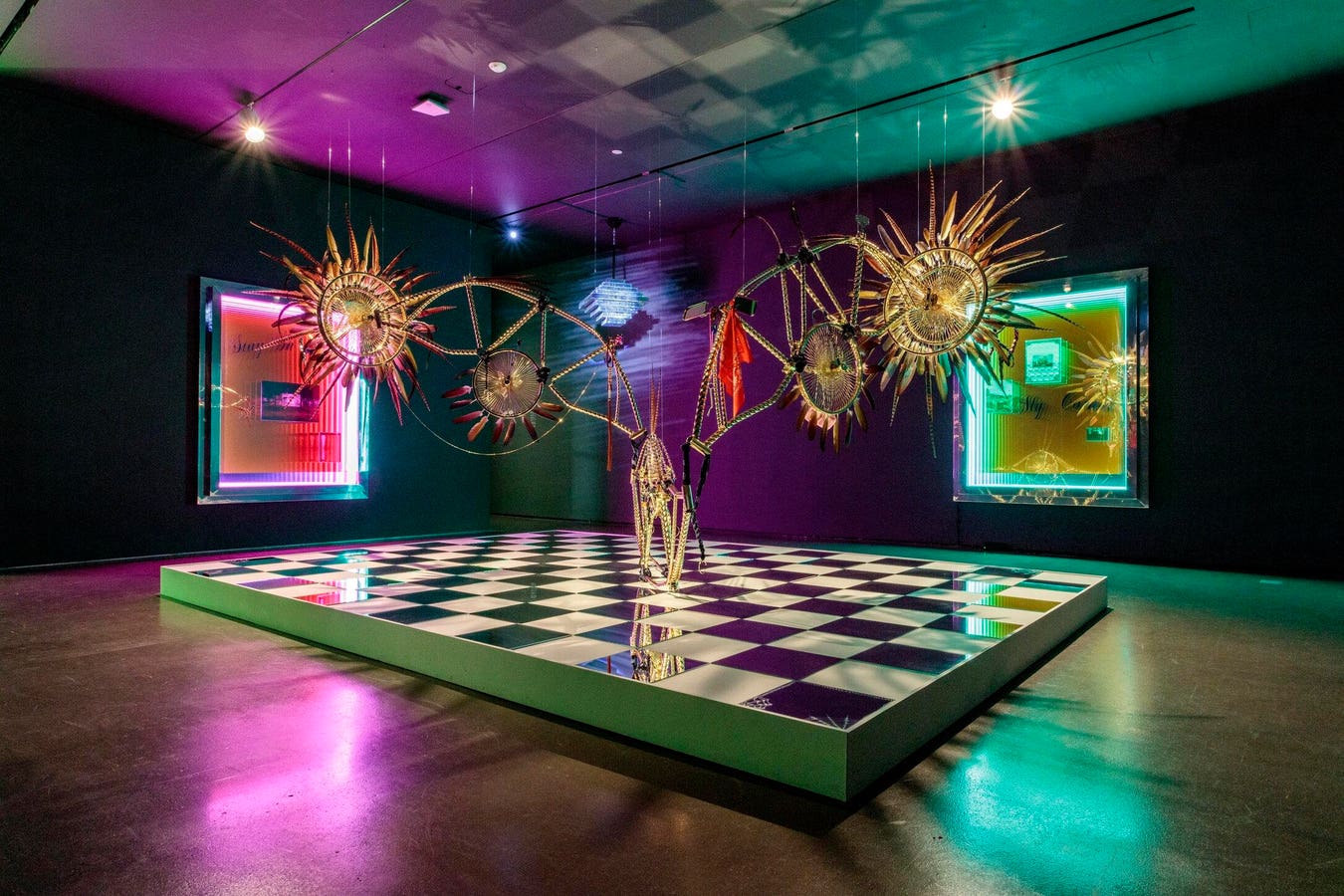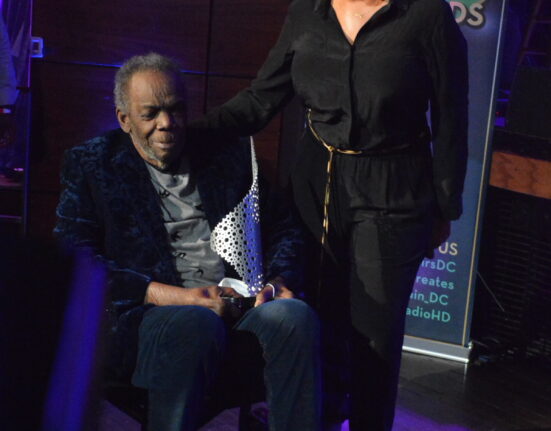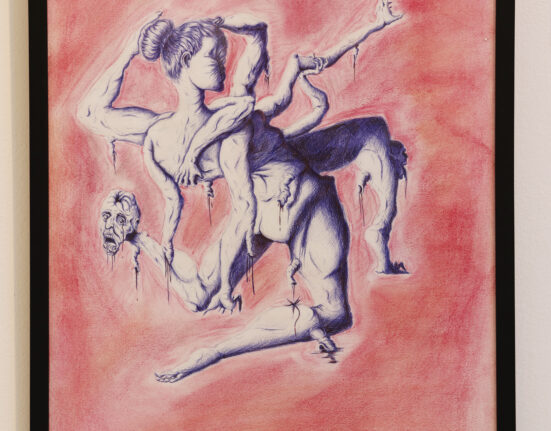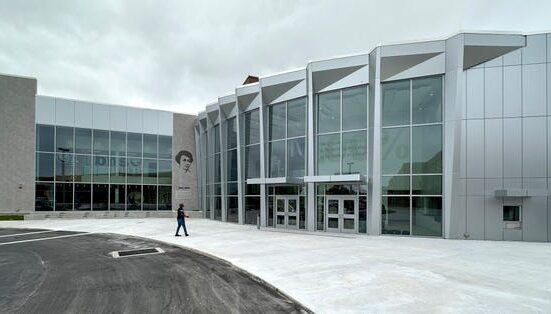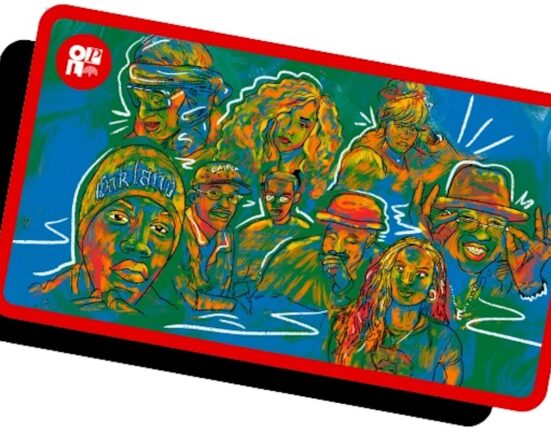What’s more “L.A.” than sitting in traffic?
So, what could be a better way of assessing the Los Angeles arts scene than planning the city’s arts biennial looking through a car windshield? That’s how independent curator Diana Nawi and Hammer Museum curator Pablo José Ramírez put together the sixth edition of the Hammer Museum’s “Made in L.A.” biennial, one of the most influential presentations of contemporary art in the United States.
“I would drive with Diana everywhere,” Ramírez told Forbes.com about developing “Made in L.A. 2023: Acts of Living.” “We would map our studio visits, we go to a studio, go back to the car, drive for 20 minutes, get a coffee, and go to the next visit. For me, it was a great experience because to understand L.A. you need to drive. You need to drive because it’s how the city works. The experience of the public space in Los Angeles is in a car, is through a car window.”
Ramírez and Nawi made nearly 200 studio visits traveling from the San Fernando Valley to Long Beach and the outer edges of Palm Springs while assessing artworks to include in the show.
“We would spend hours talking about art and life and our families,” Ramírez said. “The decisions about the kind of exhibition we made were based on those conversations inside a car.”
What they came up with was 39 artists and groups whose practices embrace craft, materiality, and collectivity. A majority of the artists are Brown, especially from Chicano and Latino backgrounds, along with African American and Indigenous. The presentation reflects those histories. Emphasis was also put on including older artists, those in their 70s and 80s, voices often left out of contemporary biennials obsessed with youth.
Works on view encompass sculpture, assemblage, painting, drawing, ceramics, performance, and installation.
“Made in L.A.” always tries saying something about the city. What are these curators trying to say?
“It’s hopefully a show that is reflecting on people’s lives,” Ramírez said. “It’s reflecting a very intimate, even domestic side of the city which is not always reflected in artistic practice. We want this show to speak to people and not be an alienating experience as happens sometimes when we go to a museum show.”
‘Acts of Living’
The subtitle for this edition of “Made in L.A,” “Acts of Living,” comes from a statement by the late Noah Purifoy (1917–2004) inscribed on a plaque at the Watts Towers: “One does not have to be a visual artist to utilize creative potential. Creativity can be an act of living, a way of life, and a formula for doing the right thing.”
The idea of considering art as an expanded field of culture entangled with everyday life began emerging to the curators through their time traversing the city.
“Pablo and I were struck by not only the diversity of practices we encountered, but also, more profoundly, by the different stakes people expressed for art making,” Nawi said. “Art has a critical role to play in people’s lives, to their wellbeing, and that of their communities; it attests to our existence and allows us a better understanding of one another.”
Nawi and Ramírez’ exploration of the city revealed two equally important types of artists: artists who make work solely because it is inside them, and artists who choose artmaking as their profession.
“When I think about ‘Acts of Living,’ this is a show that works with both groups,” Ramírez said. “We have artists that study art, they have a professional background in art, and there are people who have been practicing art for decades not even showing their work, just doing that because there is a vital drive, because that allows you to preserve your own stories, to continue to live.”
Watts Towers represents the paramount example of the latter. What is now an iconic public monument was constructed by an Italian immigrant.
Sabato “Simon” Rodia came to the U.S. around 1894. He found his way to Watts in 1921 at age 42. Over the next 30-plus years, he would go on to build the world’s largest single construction created by one individual out of steel covered with mortar and embellished by the decorative finishings of mosaic tiles, glass, clay, shells and rock.
He wasn’t an “artist” in the formal sense. He didn’t have gallery representation. He wasn’t “collected.” He surely didn’t go to art school. He was a laborer. Watts Towers his hobby. His creative obsession.
Yet, its undeniable magnificence, its architecture, its composition, its uniqueness and oddity have made it every bit as much a part of L.A.’s visual landscape as the “Hollywood” sign.
“A monument to will and life,” as Ramírez describes it. “’Acts of Living’ is a beautiful way of honoring creative communities in Los Angeles. Art is deeply entangled with life and vice versa”
Creativity doesn’t require a certificate or degree or the passing of boards to express, “Acts of Living” reaffirms this.
Art Around Los Angeles
Los Angeles County covers 4,000-square-miles; 10 million people live within its borders.
“One of the big lessons (in putting the exhibition together) was that there is not one single L.A. L.A. is ungraspable by one single image or one single description,” Ramírez said. “There are multiple L.A.’s. You jump from global to global. If you are in East L.A., you are in a completely different world than you are in Santa Monica or in South L.A.”
That makes curating any sort of reasonably sized biennial encompassing the city impossible. Choices are made. Edits. A different pair of curators would have put together a completely different, and no less accurate or estimable, “Made in L.A.”
The city’s scale also makes visiting any single museum or exhibition to understand it impossible. The closest anyone has come to achieving that is Judy Baca (b. 1946; Los Angeles) with her The Great Wall of Los Angeles–all 2,754 feet of it!
Sited in the Tujunga Flood Control Channel in the San Fernando Valley near North Hollywood, The Great Wall shares the area’s history from the prehistoric to the 1950s. Now through June of 2024, visitors at the Los Angeles County Museum of Art have the rare opportunity to see Baca and her mural team at work on updated sections of the Wall taking its storytelling through the 1960s.
Betye Saar (b. 1926; Los Angeles), another of L.A.’s artistic icons, also has new work to enjoy. She created a site-specific installation featuring a 17-foot-long vintage wooden canoe and found objects for The Huntington Library, Art Museum, and Botanical Gardens. The work, which debuted November 11, 2023, will be the centerpiece of an exhibition, “Betye Saar: Drifting Toward Twilight.”
“When I was a child in the 1930s, I would come to The Huntington with my mother and aunt, who were avid gardeners,” Saar said. “As I became an artist, I realized the importance, and the influence, of nature in my work—whether it’s the moon and the stars, branches and rocks, or bones and shells. It is my desire that ‘Drifting Toward Twilight’ brings the outside in, blending the gardens with the gallery and creating an immersive, contemplative experience for the viewer.”
The Betye Saar exhibition will remain on view through November 30, 2025. The installation will become part of The Huntington’s permanent collection.
Following in Saar’s and Baca’s footsteps as a powerhouse female artist from Los Angeles, Kenturah Davis (b. 1980) continues to shine, most recently as part of “Here: Arts & Culture Along the K.” The exhibition at the Museum of African American Art at Baldwin Hills Crenshaw Plaza showcases the Metro Art K Line art program through December 30, 2023. The Metro Art program gives Los Angelinos and visitors a good reason to forego that most “L.A.” of experiences: sitting in traffic.

